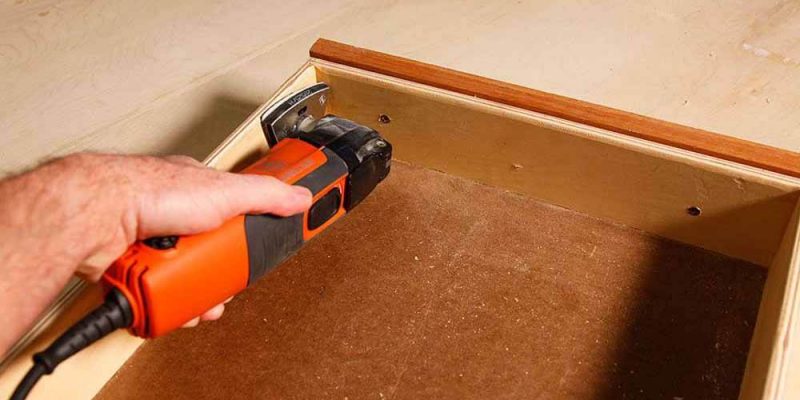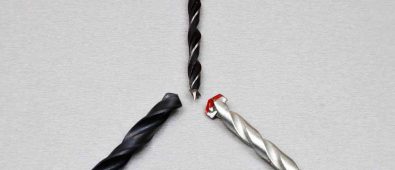No matter if you’re a carpenter, plumber, home re-modeler or even a DIY enthusiast, you know it well that how great an oscillating tool is. With proper cutting blade attached, it can deal with large tiles and even tiny rusted nuts, etc.
But how can you unleash the hidden power of this tool? Are there tons of accessories that you’ve to buy? Or it’s about knowing the correct tips and tricks at the right moment.
Therefore, we’ve come up with this roundup list of 8 cool oscillating tool tips and tricks, Sounds interesting, let’s proceed-
Top 8 Actionable Oscillating Tool Tips and Tricks
Be 100% Certain About the Exact Blade to Use
Oscillating tools are majorly used in cutting hard surfaces. Obviously, that will involve some sort of blades onto the oscillating tool itself.
On that note, there are several blade variations, round blade and straight blade are the two majors. The straight blade is the best fit in case you want to use the oscillating tool for works like plunging. Because with the straight blade, you can get to stab your blade into the working surface.
Aside from straight blades, round blades have their perks as well. Mostly, they are used in linear cuttings that are quite long. You see, to cut a long cut across a straight line, you gave to maintain the direction by micro-inches. And a round blade is, therefore, a right fit.
Corded or Cordless – You Decide
In 2019, you will have both a Corded and Cordless version of almost any power tool that is hand-carriable. And no wonder that you’ll love to grab the second.
But hold your horses, corded oscillating tools have their unique selling points although you have to deal with tangled wires with it. But comes to be more cost-effective more lightweight and sometimes, can provide you with more power.
On the other hand, the cordless oscillating tool is the jack of all trades when it comes to hassle-free operation. Specially, if the work-site has no power outlet nearby, you don’t have any choice instead of working with a wireless tool.
Motor Power Is The Key
There is a lot to say when it’s about the motor of a tool like oscillating or miter saw. But let’s start with how it’s the most crucial role players when it’s about your oscillating tool’s work output.
Motor mainly produces power that drives the blade of the tool. So, you need to know how many watts of power output your motor can come with, and will it suit your work or not.
Apart from the output, keep an eye on how much energy your motor is eating up. Usually, the input watt is within 180 watts and 250 watts. And in the case is an AC type motor, make sure it’s compatible with both industrial and household wattage.
The Transmission
Right after the motor power, it’s the transmission that deserves to be a discussion. This part of the oscillating tool is, however, also known as a gearbox. If you’ve opened up the tool anytime, you can see how that looks like.
The job of the transmission is to dictate how much oscillation per minute(OPM) the machine should produce. Usual oscillating tools come with a transmission range within 11000 OPM and 21000 OPM.
Keep the Kickback Away
If you’ve been using oscillation tools for quite a while, you might know what kickback is. So, we won’t get into the technical details of it. Rather, let’s learn how you can end up with a tool that has a minimal kickback tendency.
Just a while ago, we were talking about transmission, right? So, the movement of the blade is to be limited within a short-range, and that’s the key to ensure low kickback. Because if you limit that within 3 degrees, it will move slow. And this slow movement will ensure precise work without chances of kickback.
Make Sure To Get An Easy-to-handle Device
Comfort in operation is one of the prime concerns of oscillating tool users. And that’s where the switch panel comes in.
The switch is the part of the tool that lets electrical power flow through the motor of the tool. Usually, there are two types of switches- the sliding switch and the press switch. The first kind is way more convenient to use compared to any other version of it.
Make Faster Cuts on the Floor
One of the many regular uses of oscillating tool is, it lets you cut floors etc. And that’s not only when you need to take the old tile floor off. It also comes to be important in prepping the new floor.
A quick top of how to do flooring prep in a faster way is to use a flush cutting technique. So, it will make the blade to be butter on the knife. In this manner, the tool will make clean, clear, and straight cuts.
Uproot the Rusty Kitchen Nuts
Twisting a rusted screw that’s hard to extract by hands or any hand tools, is easily done by an oscillating tool. But there is a definite strategy of doing that.
You need to equip your oscillating tool with a bimetal cutting blade. It will help to cut grooves on the nut as you press it against the nut and rotate it. Once the groove is created, start rotating the tool and keep it going until the whole nut comes out.
Bottom Line
So, this was the list of oscillating tool tips and tricks. Although we’ve come up with a selected set of 8 points, but there are tons of other such pieces of advice. But our best suggestion would be to get a good quality oscillating tool and check out the specs yourself. Good luck!



